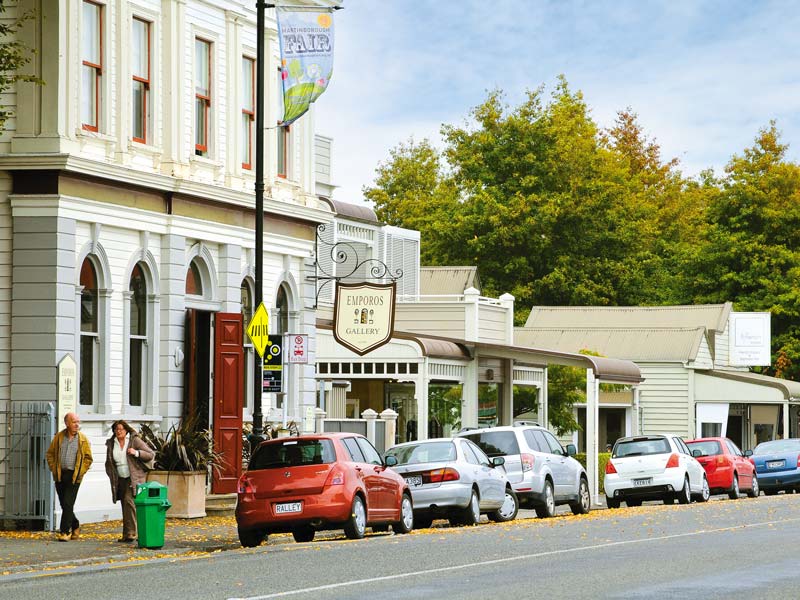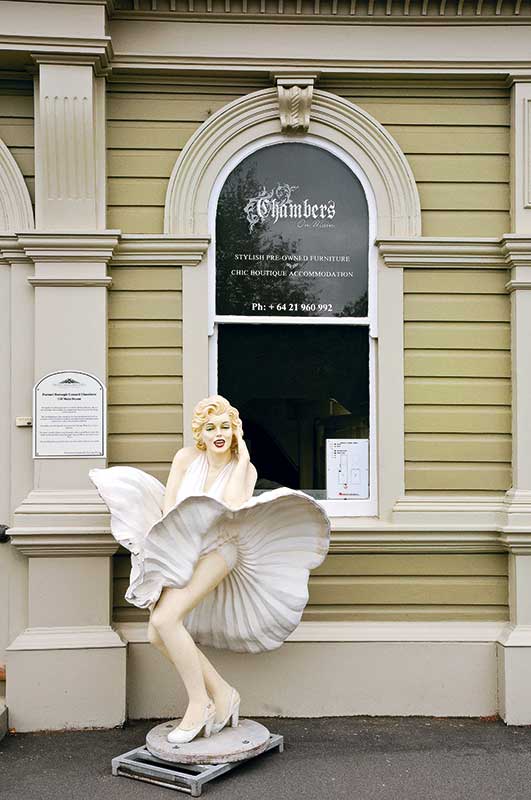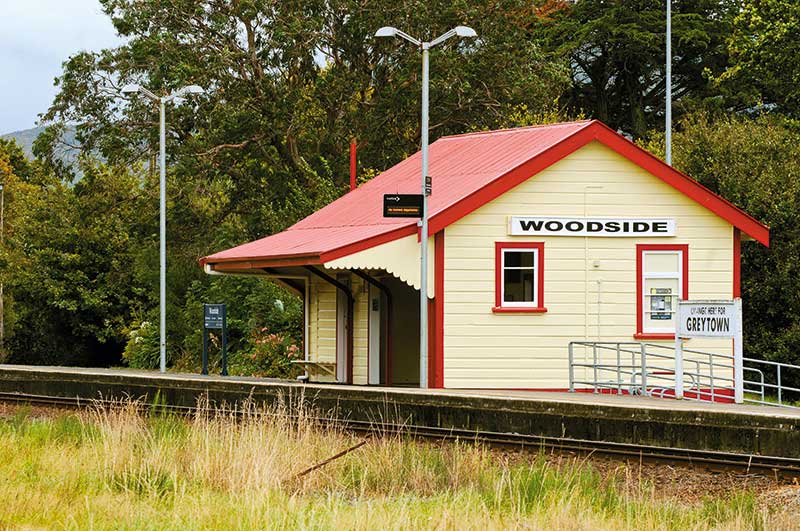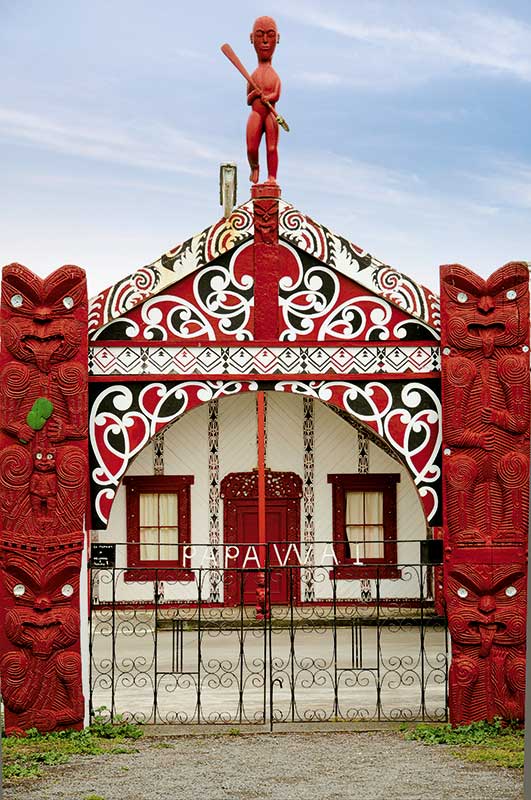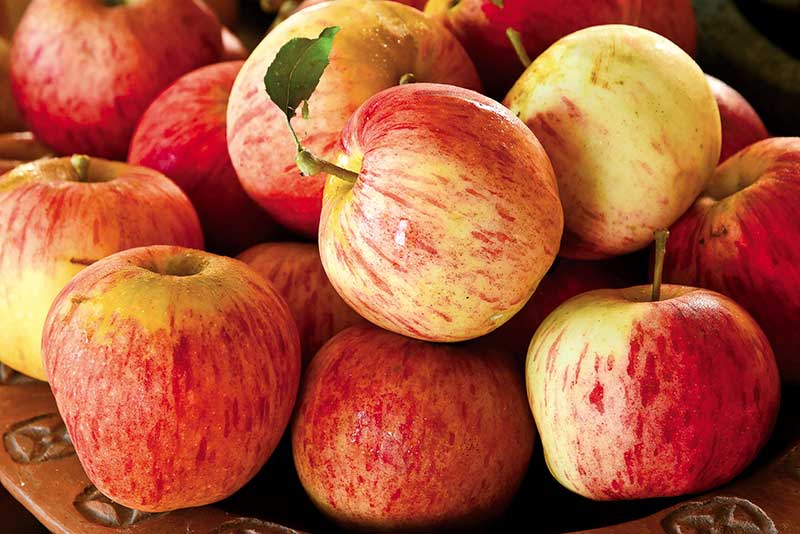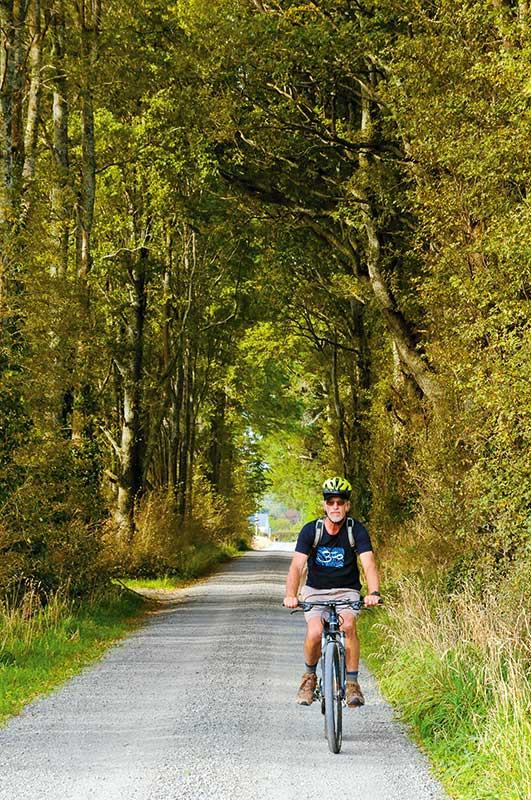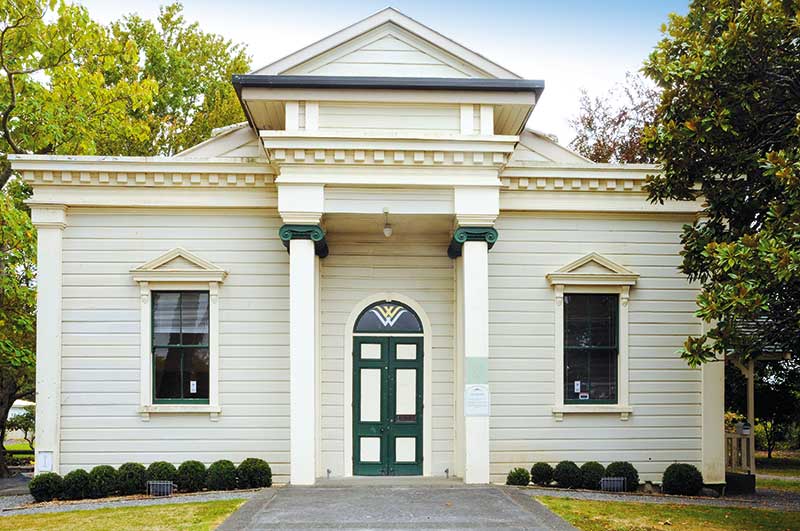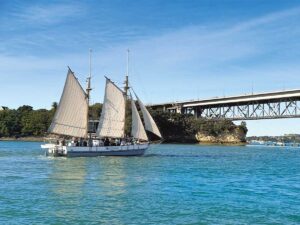Wellingtonians may take Greytown for granted, it’s always been there, over the hill, but for outsiders like me, an Aucklander who has never visited before, it’s the best kind of revelation. It must be, along with Oamaru in the South Island, New Zealand’s cutest town.
The basis for its beauty is the numerous heritage buildings that give it a quaint Victorian ambience. And, in the last few decades, folk with good taste and money have fled from Wellington, and Auckland too, to settle in Greytown, for lifestyle reasons. They, along with the locals, enthusiastically nurture the historic ambience, while adding trendy aspects to it; cafes, designer fashion shops, art and crafts shops, and cycle trails. It’s not just a pretty facade; there is plenty for visitors to do besides enjoying the past.
Historically, Greytown is special because it was the first inland town in New Zealand. In 1854, with the organisational help of Governor George Grey, after whom the town is named, the first settlers walked over the Rimutaka Range from Wellington. They were each given an acre of land on Main Street to build a house, and 40 acres out of town to farm. There was a sense of community from the beginning and the town thrived. It was the biggest settlement in the Wairarapa.
The railway from Wellington to Napier (completed in the 1870s) bypassed Greytown, though there was a branch line to it from Woodside Station. Being on a branch line didn’t work and, overtime, Greytown slowed down while Masterton steamed ahead.
Nothing much happened in Greytown for a century. There was little growth and not much dreaded development that, in other towns, was the excuse to demolish Victorian buildings in favour of something modern but less attractive. But now the old buildings are treasured and have been renovated and given a new purpose. Colonial is cool.
Greytown’s Maori heritage is also special and Papawai Marae was one of the most important in New Zealand. In the late 19th century, it was the focus of Kotahitanga, the Maori parliament movement. The dominant leader, Te Manihera Te Rangi-taka-i-waho, saw the inevitable encroachment of land-hungry Pakeha and supported pastoral leases, instead of land sales and engagement with Europeans.
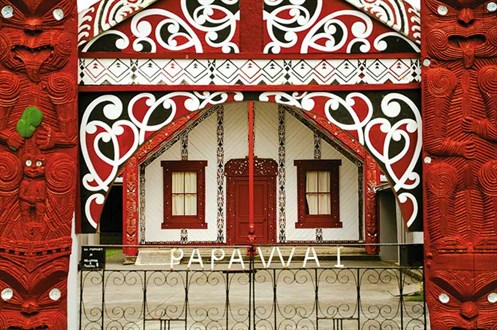
In the 1880s, Te Manihera was succeeded by Hamuera Tamahau Mahupuku.
The existing meeting house was opened in 1888 and a large T-shaped structure was built for the Kotahitanga, the first Maori parliament. It passed a resolution to end Maori land sales and in 1898 it hosted a large hui to discuss government plans to administer Maori land. Mahupuku believed this would give the Maori more independence but this split the Kotahitanga movement.
The marae is now beautifully restored and, besides being the heart centre for the local Maori, it is a venue for all sorts of community activities and large gatherings.
I spent a few happy hours wandering around town ogling at all the primped and pretty old houses with their sweet-pea and old-roses gardens. Besides this, for those with an interest in heritage, Cobblestones, Wairarapa’s Early Settlers Village Museum, is worth a visit, especially on Sunday morning when there is a market in the grounds.
Cobblestones has a blacksmith, saddlery and stables, school, church, hospital, a couple of colonial cottages and more. The most interesting in this collection is the original 1875 Greytown Hospital. Staying alive must have been a scary business back then, considering the things done to one in a hospital. And it’s easy to see, looking into the dentist’s room, why people called dental clinics murder houses.
The Sunday morning market is a hoot, with many of the locals and their dogs gathering for a chat and, in the case of the dogs, serious sniffing. Refreshingly, the market stalls have a country-town ambience and haven’t been taken over by old-junk sellers. The Church houses knitting, crocheting and other handcrafts stalls; there are baby’s booties, felted bags, hand-knitted beanies and carefully crotched flowers; it takes great self-control not to buy-up large.
It was early autumn when I visited and there was plenty of enviably cheap, fresh-off-the-tree, apples, pears, and quinces. Dolly’s Delights, homemade pickles and jams, are highly recommended, particularly her tomato relish which is as close to divine as relish gets and is a deal at $4 a jar. These grown and made-with-love country-fair things are hard to come by in central Auckland.
There is nothing country-fair about the shops in Main Street. They are quirky but super-cool and I start with Schoc Chocolates, in a colonial grocery store, at the edge of Cobblestones.
Chocolatier Murray Langham has had career incarnations as a chef, hotel manager, and therapist and he now pushes chocolate to the limits of taste sensations. He doesn’t believe chocolate should necessarily be sweet and at the chocolate tasting bar we sample chocolate shards to find out which of the extraordinary range flavours we most love. I tried curry, lime and chilli, apricot and rosemary, carrot and coriander, fennel, salted caramel, plus many more left-field combinations. The winners were lime and chilli, and salted caramel.
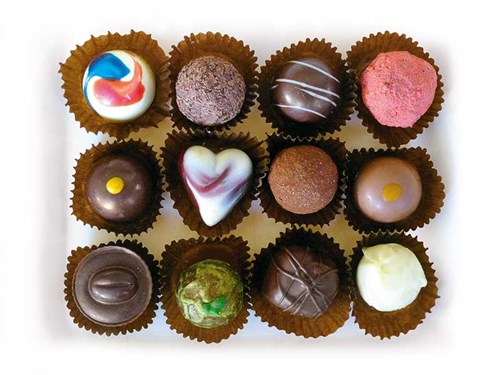
Good quality chocolate, according to Murray, should be enjoyed free of guilt as it benefits one’s health and promotes happiness. It’s loaded with phenylethylamine, a happy-maker chemical that we all produce in small doses. Besides that, according to the good people at Schoc, it increases sexual appetite, restores flesh on thin people, increases breast milk production and improves elimination and longevity. Well, it’s reassuring to know that my long-term chocolate addiction is good for me.
Another favourite shop is Super Minx, named after the first car I crashed, a shoe boutique with New Zealand-designed idiosyncratically stylish shoes and boots. There is nothing frumpy and nothing with heels so high they are impossible to walk on. Damn, I have enough boots, already.
Imperial Productions sells tiny toy soldiers and miniature figurines in a cute shop reminiscent of an old Victorian toy shop. They are made out the back of the shop of hot moulded metal and immaculately painted. Fusiliers, infantry men and hussars are not my passion but old Mr Cowe, designer and craftsman, is a miniature fanatic and his perfect products sell to discerning collectors around the world. A visit to the shop is fascinating even if you happen to not be a fan of miniature figurines.
Across the road The Lolly Jar is an eye-catcher, and a money-catcher, too, considering the number of families standing around the pick’n’mix bins. There are 150 varieties of lollies to choose from, hence the agonising indecision on kids’ faces. And grown-ups can have their old favourites; black balls, gob stoppers, spearmint leaves, acid drops and Jersey caramels.
I poke into a couple of designer frock shops, and there is some trendy gear, but I’m over shopping and hungry. I meet hubby Sam at Salute, a tapas bar, which has a table in the sun, a nice vibe, fast service and the tapas keep coming. Fried haloumi, green beans with spiced almonds and parmesan, baby beets and rocket, spiced pork belly, paella; there is nothing ordinary here.
It was a day of too much mooching around, so in the late afternoon, we explored the countryside on hired bikes. Yes, its flat, yes, there are great bike trails. We zoom off on what used to be the branch line from Woodside Station and is now the five-kilometre Greytown-Woodside Trail. Then we followed country lanes to the Waiohine River and a path that winds its way through farmland to the north of town. Highlights include sweet-as heritage Woodside Station, the rushing-over-rocks river and the back lanes where massive, ancient trees joint together above the road making tunnels of leafy green.
Greytown is rightly proud of its trees and New Zealand’s first Arbor Day was held there in 1890. There was a band, a procession and speeches, a much more high-key celebration than those held these days. In Main Street we stopped to admire a huge Eucalyptus, one of the first exotic trees to be planted in the Wairarapa which, along with 11 other seedlings, was pushed over the Rimutakas in 1856, in a wooden wheelbarrow by an immensely strong Samuel Oates.
There is a heritage tree trail, I have the brochure, but that will wait for another time. Meanwhile, a thirst had been cycled-up and we headed for Cuckoo Café for a bottle of Wairarapa Pinot Noir and a light dinner.
Never miss an issue of Motorhomes Caravans & Destinations magazine. Subscribe here.

